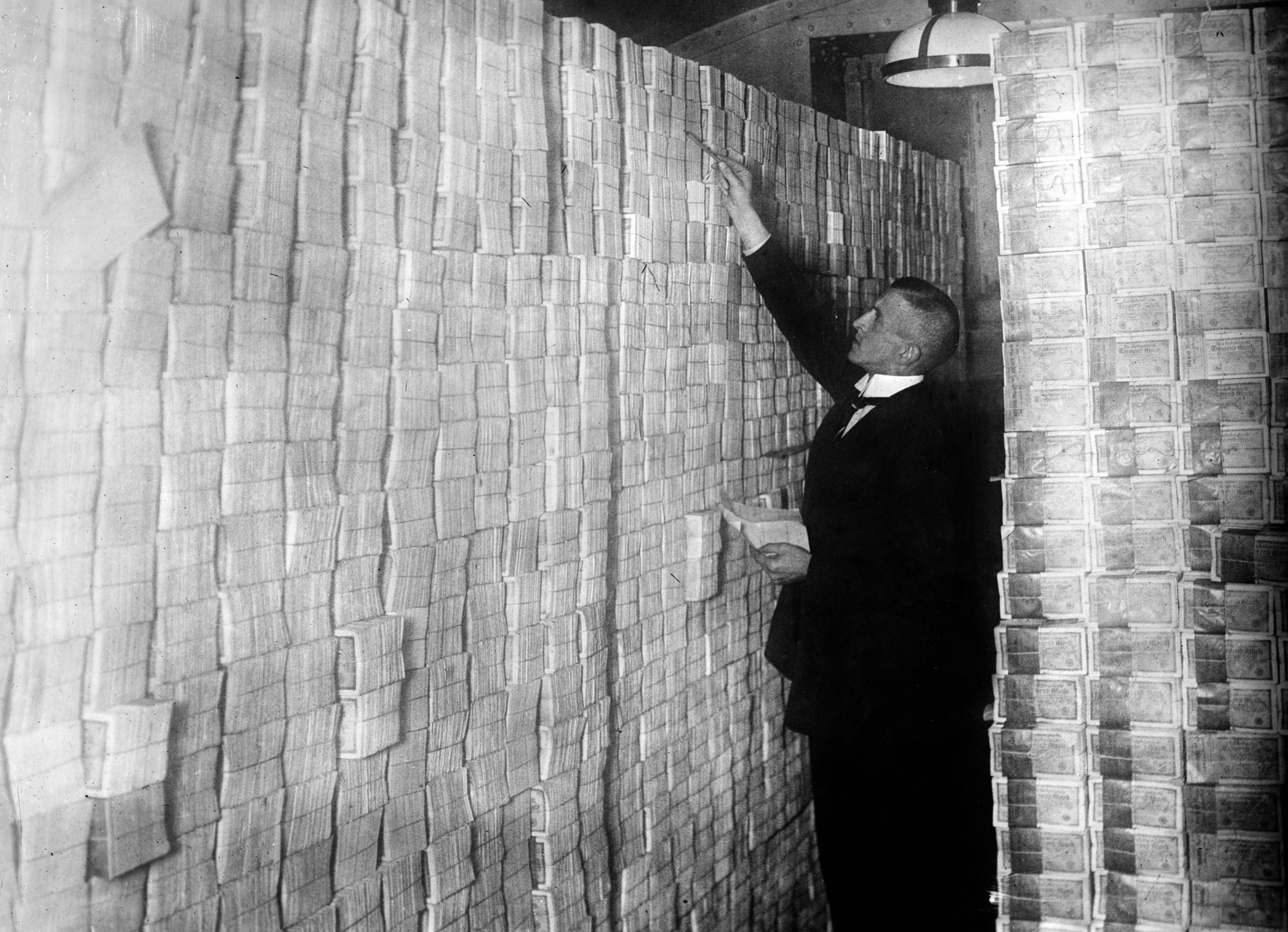[ad_1]
| Item/Service | 2021 Price | 2022 Price With 2% Inflation | 2022 Price With 1,000% Hyperinflation |
|---|---|---|---|
| Cup of coffee | $2.00 | $2.04 | $22.00 |
| Gallon of milk | $3.50 | $3.57 | $38.50 |
| Men’s shirt | $60.00 | $61.20 | $660.00 |
| Insulin (vial) | $95.00 | $96.90 | $1,045.00 |
| 55-inch television | $400.00 | $408.00 | $4,400.00 |
| Two-bedroom apartment rent | $2,000.00 | $2,040.00 | $22,000.00 |
Source: Writer Calculation
Causes of Inflation
Economists recognize two main causes of inflation: cost-push and demand-pull. Cost-push inflation happens when the cost of production increases (e.g., from higher costs of raw materials or wage boosts). This results in an increase in prices for goods and services since manufacturers pass their price increases along to consumers. With cost-push inflation, prices are “pushed” up by rising production costs.
Demand-pull inflation happens when supply is limited compared to demand. Demand can go up due to a strong economy, a natural disaster, or an oversupply of money. In these instances, demand outpaces supply and “pulls” prices higher.
Causes of Hyperinflation
The two primary causes of hyperinflation are (1) an increase in money supply not supported by economic growth, which increases inflation, and (2) a demand-pull inflation, in which demand outstrips supply. These two causes are clearly linked since both overload the demand side of the supply/demand equation.
The increase in money supply is typically caused by government action, such as what happened in Germany in 1923. When the government injects money into the economy, hyperinflation can result. The demand-pull inflationary effect often happens primarily because people have more money, creating a willingness to pay higher prices, which increases demand.
Hyperinflations are Rare
Hyperinflations, as illustrated above, can be fiscally catastrophic to a nation. Fortunately, they are very rare. Åslund goes so far as to refer to hyperinflation as “an irrelevant concern for ordinary monetary policy.”
Hyperinflation can happen when the government prints more money in response to a crisis, as during the Weimar Republic. The crisis doesn’t have to be a war. It can be a poor economy, disease, natural disaster, or even a sense of panic that causes people to hoard. This, of course, lowers supply, which increases demand.
Any of these factors, when carried to an extreme, can result in hyperinflation. As Åslund notes, however, this rarely leads to hyperinflation under ordinary monetary policy.
Inflation and hyperinflation happen only when prices in general go up. If coffee alone went up 1,000%, for example, that would be due to some other factor, such as a catastrophe somewhere in the supply chain, not a sign of hyperinflation.
Nevertheless, Rumors Persist
Despite the high bar to achieve hyperinflation, there are those who suggest that’s exactly where the United States is headed. Here are samples from recent internet blog posts, displaying various approaches:
“Deficit-to-outlay ratio tops 60%, above the hyperinflationary threshold of 40%.” — Albert Sung
“Eventually all major Nation State Empires go down and their people lose confidence in their leaders and, in tandem, the money they issue. It has happened in Ancient Babylon, in Egypt, China, Rome, various leading nation states in Europe, and it will eventually hit the U.S. when the American people decide that they would rather live their lives as a free people rather than as slaves to a unpayable national debt whose interest will eventually consume more of the federal budget than military expenditures.” — Joseph Holleman
Is the United States Actually Headed for a Hyperinflation?
Some members of the general public may think so. But most authorities say, “No.”
Economist Asher Rogovy attacks the persistent internet rumor that the U.S. is printing too much money and that this will lead to hyperinflation.
Says Rogovy, “In the U.S., the central bank does not pay debt with the money it creates. Rather, it lends money at its targeted interest rate and the private sector employs that capital more productively. The money created is paid back, which is a crucial reason this monetary policy doesn’t produce hyperinflation.”
Professor L. Burke Files of Hayek Global College suggests that hyperinflation is unlikely in stable economies like the U.S., in part due to cost-control factors made possible by a world economy. “The interconnected nature of the world,” Files says, “is the ‘pressure relief valve’ for most nations. Those nations that print an absurd amount of money, like Zimbabwe—or try to manipulate their currency and restrict trade, like Argentina—become the outliers.”
“I don’t think we’ll see inflation stay as low as the Federal Reserve’s inflation outlook of just 2%,” says Jim Pendergast, senior vice president of altLINE. “That said, I doubt we’ll see the kinds of hyperinflation touted in these apocalyptic article headlines. It’ll be a mixed bag due to a specific set of circumstances lingering from COVID.”
Finally, attorney Steven J.J. Weisman, Esq., addresses what he calls the potential “scam” side of some internet hyperinflation rumors. “Sometimes stories like this are perpetrated merely to be outrageous enough to lure people into reading the stories which may be posted on sites where they earn advertising dollars according to how many clicks they get,” says Weisman.
[ad_2]
Image and article originally from www.investopedia.com. Read the original article here.

